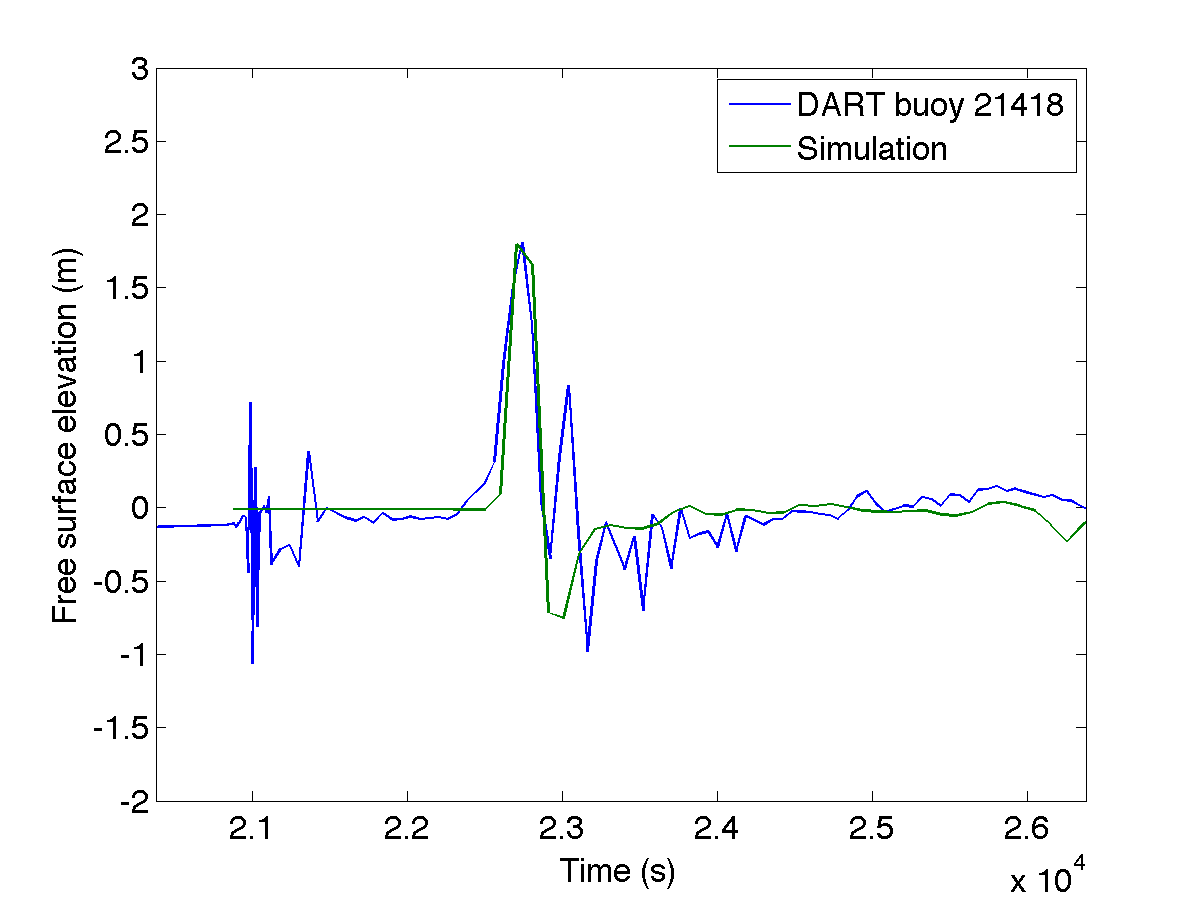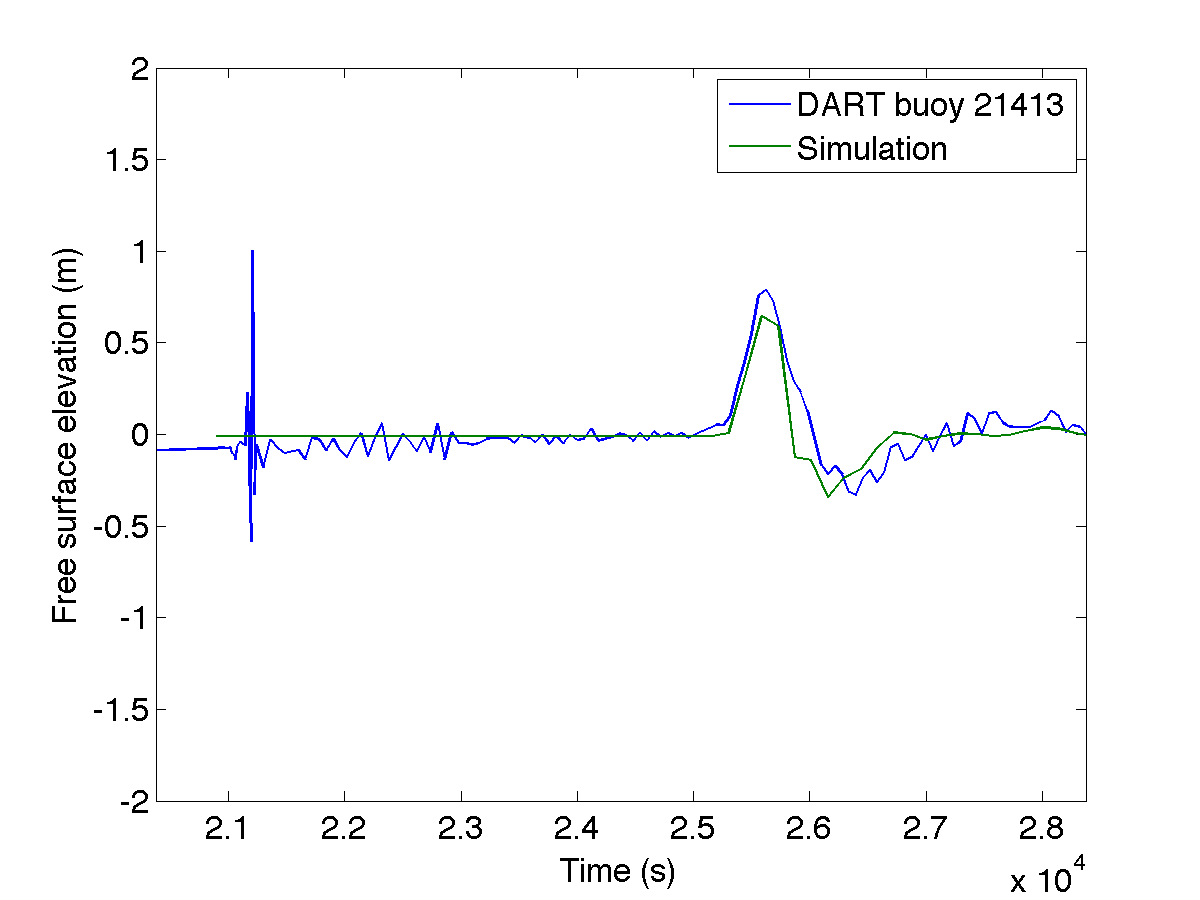Section: New Results
Free surface geophysical flows
Participants : Emmanuel Audusse [LAGA - Université Paris 13, Institut Galilée] , Sakina Ayata, Anne-Céline Boulanger, Marie-Odile Bristeau, Benoît Perthame, Jacques Sainte-Marie [CETMEF and MACS project-team] .
We are involved in research concerning the numerical simulation of free surface geophysical flows such as rivers, lakes, coastal areas and also overland flows. Many applications related to environmental problems are concerned : floodings, dam breaks, swell, transport and diffusion of pollutants, water quality, upwellings, sustainability of aquatic ecosystems, ...
The basic model for these problems is the 3D free surface Navier-Stokes system leading to a 3D solver [64] with a moving mesh. However for efficiency reasons, vertically averaged models such as the Saint-Venant system [75] are often used.
The Saint-Venant equations are deduced of the Navier-Stokes system with two main assumptions:
We have developed extensions of the Saint-Venant system where the basic Saint-Venant solver [60] is still used and, in that way, the robustness, the efficiency and the easiness to treat the free surface are preserved while the domain of validity is larger.
In these extensions, we relax the two above assumptions. Actually, we have derived a non-hydrostatic shallow water model and a multilayer Saint-Venant system.
We have coupled the hydrodynamics of free surface flows with other phenomena such as biology (phytoplankton culture) or erosion.
|
Hydrodynamics and biology coupling
Cultivating oleaginous microalgae in specific culturing devices is seen as a potential source of biofuel for the future. The complexity of this process coupling non linear biological activity to hydrodynamics makes the optimization problem very delicate. The large amount of parameters to be taken into account paves the way for a useful mathematical modeling. Due to the high heterogeneity of raceways along the depth dimension regarding temperature, light intensity or nutrients availability, we adopt a multilayer approach for hydrodynamics and biology. For hydrodynamics, we use a multilayer Saint-Venant model that allows mass exchanges, forced by a simplified representation of the paddlewheel. Then, starting from an improved Droop model that includes light effect on algae growth, we derive a similar multilayer system for the biological part. A kinetic interpretation of the whole system results in an efficient numerical scheme. We show through numerical simulations in two dimensions that our approach is capable of discriminating between situations of moving water or calm pond and show the influence of light intensity. Moreover, in this paper [49] we exhibit that a posteriori treatment of our velocity fields can provide lagrangian trajectories which are of great interest to assess the actual light pattern perceived by the algal cells and therefore understand its impact on the cell factory.
|
Analytical solutions for the free surface hydrostatic Euler equations
In this paper [50] we propose a large set of analytical solutions for the hydrostatic incompressible Euler system in 2d and 3d. These solutions mainly concern free surface flows but flows with partially free surface or in a deformable pipe are also considered. These analytical solutions that can admit entropic shocks can be especially useful for the validation of numerical schemes.
Phytoplankton growth in marine ecosystem
Four different phytoplankton growth models have been implemented. The simplest model assumes constant chlorophyll/carbon and carbon/nitrogen ratios. The more complex ones take into account photoadaptation through a variable chlorophyll/carbon ratio and they also assume a variable carbon/nitrogen cellular quota (non-redfieldian stochiometry). These models have been coupled to a 1D ecosystem model at BATS, a station located in an oligotrophic area of the North-Western Atlantic Ocean. The different models have been calibrated from in situ data recorded at BATS using a micro-genetic algorithm to optimize the parameter values. The models with optimized parameters were then compared with each others. The results highlighted the necessity to take into account photoadaptation and variable cellular quotas to simulate the seasonal dynamics of chlorophyll and primary production in oligotrophic areas. They also demonstrated that the chlorophyll did not have to be represented by a prognostic variable and could be represented by a diagnostic variable instead, see [46] .
Erosion processes : modelling and simulation
We are interested in the modelling of sediment transport phenomena. We mostly focus on bedload transport and we do not consider suspension sediment processes. We first propose a coupled numerical scheme for the classical Saint-Venant – Exner model. It is based on a relaxation approach and it works with all sediment flux function. We exhibit that this coupled approach is more stable than the splitting approach that is mostly used in industrial softwares. Then we derive an original three layers model in order to overcome the difficulties that are encountered when using the classical Exner approach and we write a related relaxation model, see [45] .






